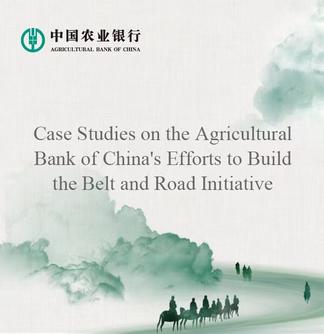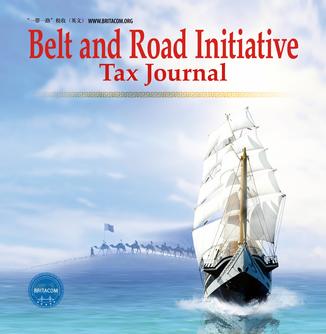
Participants compete during the 2025 Chongqing Marathon in southwest China's Chongqing Municipality, March 2, 2025. (Xinhua/Huang Wei)
BEIJING, April 3 (Xinhua) -- In recent years, the craze for running has been at all time high in China. According to the statistics revealed by China Marathon, there were 32 marathon events nationwide on the same day of March 30, with over 420,000 runners.
Experts note that the recent surge of marathon events in China has fueled local economic growth through twin incomes of sponsorships and spending on tourism, accommodation, transportation and sports equipment.
-- Soaring supply and demand
Most races in the spring are held in March and April, making Sundays in the two months "Super Marathon Day," which mirrors the transition of road-running from a niche sport into one of the favorite pastimes in China. According to the Chinese Athletics Association (CAA), China hosted 749 road-running events in 2024, attracting about 7.05 million participants, up 1 million year on year.
Mr. Pan just finished his maiden marathon in southwest China's Chengdu. Featuring the scenic Dujiangyan area, Chengdu World Heritage Marathon provided runners with local delicacies at snack stations along the courses.
Mr. Li is not as lucky as Mr. Pan, as he failed for three consecutive years to secure a spot in the Beijing International Running Festival.
Despite the growing races, the supply still falls short of the soaring demand. A spot in some major marathons is now even more coveted. Taking the 2025 Wuxi Marathon as an example, 429,000 candidates signed up while only 6 percent of applicants were granted a place on the starting line of a full marathon.
Zhao Fuming, president of the Beijing Marathon Association, said that marathon races, with their strong social and interactive aspects, can create a wide-reaching communication impact and drive the national fitness movement.
"With the economic and social development, Chinese people are placing greater importance on their health, and are more willing to take part in sports events," said Zhao.
-- Chase for fame and fortune
The marathon boom in China has been largely dependent on hosting cities. The sheer number of marathons held across the country reveals that so many cities are rushing to host marathons, for the economic impact and city branding.
The sports industry, dubbed as "the happiness industry," is poised to be a driving engine for consumption, as it will drive the coordinated growth of transportation and accommodation industries through event merchandise and sports tourism.
According to data from Wuxi City, the revenue from catering, accommodation and tourism during the 2025 Wuxi Marathon reached 505 million yuan (about 69.15 million U.S. dollars), up 78.2 percent year on year, representing a record high. Similarly, the 2025 Wuhan Marathon attracted more than 70,000 people to Wuhan, and the total spending driven by participants from outside the host region was nearly 300 million yuan, an increase of about 40 percent year on year.
Apart from contribution to the local economy, marathons also have the potential to produce long-term effects in terms of city branding. A marathon often features some of the best routes and iconic landmarks of a city, and could generate significant publicity about the host city.
For example, the 2025 Wuhan Marathon course connected more than 20 famous scenic spots in Wuhan, with 27 photo-up locations for cherry blossom. According to Ctrip, China's leading online travel platform, the ticket bookings of these scenic areas was five times as much and the hotel bookings near the course rose by 364 percent month on month and 50 percent year on year.
More cities are hopping on the wagon of hosting sports events. East China's Zhejiang Province said in a recent circular that the province aims to build a 10,000-km trail in 2025 to host 50 sports events, such as hiking, cross-country and cycling. The city of Qinhuangdao in north China's Hebei Province is also mulling their marathon IP.
-- Rapid industrial upgrade
The sports development goals and targets outlined in the 14th Five-Year Plan (2021-2025) showed that by 2025, the total scale of China's sports industry will reach 5 trillion yuan, with the added-value accounting for 2 percent of the GDP, sports consumption exceeding 2.8 trillion yuan and the number of related practitioners exceeding 8 million.
Data from the business information platform TianYancha shows there are more than 720,000 enterprises related to sports events in China, among which about 32,000 businesses are newly-registered since 2025.
According to an industrial insider, the marathon industry chain contains multiple links. Enterprises could receive significant amount of money from event merchandise, broadcasting rights, entry participation fee and sponsorship.
Meanwhile, as the road-running events are becoming more standardized, professional and smart, cross-sector partnership and innovation have been emerged. M-Action, the sports nutrition range under Chinese dairy giant Mengniu has partnered with the Wuxi Marathon and rolled out a new cherry blossom and rose jelly gel. Another example is that Wasu Media Holding Co., Ltd. (000156.SZ), has developed AI assistants based on its large model for the Ningbo Marathon in March.
Sports events are also adding momentum for listed sports companies. CPT, a Beijing-based nutrition brand, which has sponsored over 700 sports events, saw its revenue exceed 1 billion yuan in 2024, a year-on-year increase of 23.44 percent. Chinese sportswear manufacturer Anta saw its revenue exceed 70 billion yuan for the first time in 2024, a year-on-year increase of 13.6 percent, with net profit increasing by 52.4 percent to nearly 15.6 billion yuan.
"The long-term growth trend of the global sports footwear and apparel market remains unchanged, and it is still a high-quality track full of development opportunities and diversified consumer demand," said Ding Shizhong, chairman of Anta.
(Edited by Li Shimeng with Xinhua Silk Road, lishimeng@xinhua.org)




 A single purchase
A single purchase









